By Zara F., co-op student
Hello everyone, Zara here. As I reflect on what I have done at the Oshawa Museum these past few months, I am thankful for all I was able to do. Although waking up at 7:30 am every morning was a pain (I typically wake up at 8:30 am), starting my slow morning with tired eyes but the determination to work with the quiet but sometimes energetic scene behind me was honestly, quite nice. I’m sure I’ll miss it, at least a little bit. I’ve learned and refined many useful skills through the projects I got to work on. I know for a fact that these will only continue to improve as I (hopefully) proceed with this sort of work in the future.
You may be thinking, “What did you like doing most?”
Unfortunately, I don’t have an answer for you, not one that’s straightforward at least. Through scanning 30-year-old photographs, taking a closer look at artifacts, and reading about Oshawa’s past through books, articles and newspapers, I’ve enjoyed the unique characteristics of each project.
With all that said, I’d like to shine a little more light on the Downtown BIA photo collection.
If you’ve read my first blog post, you would’ve known that I only just recently moved to Durham a few years ago. Oshawa was a name I heard of in the past but never really knew much about. The Oshawa Museum offers great information, especially for people like me, to explore the deep history and culture of this part in Canada.
The BIA Collection presents a variety of things, from festivals, to store fronts, and much more. It was really cool to see these photos of Oshawa, people having fun and enjoying the city. As I scanned, I remember thinking, “Did these people, even just 30 years ago, ever think they’d be scanned and documented like this?” The world has taken so many photos in the past but ever so often are their photos documented and kept safely as archives. It’s a fascinating thought.
Here are some photos I’d like to feature:
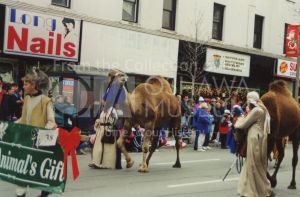
I’ve heard of kangaroos walking around in Oshawa but not camels! If it weren’t for this record, I wouldn’t have believed anyone of this time who said camels really did walk these roads.
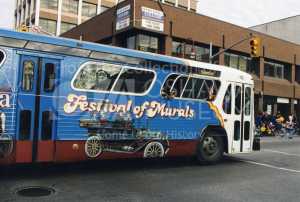
I remember this photo being one of the first that I scanned. One thing I took for granted before moving was Montreal’s transit system. I took the Metro, and sometimes the bus, from school every day. Moving here, in Durham, I can conclude that the transit system… leaves something to be desired. Even the TTC is confusing to use, not user-friendly at all, at least in my opinion. Anyways, before I go on a long ramble, let us appreciate the artistry of this awesome design! Maybe if they brought back busses like this, I’d complain less. This seems to be the only bus of its kind in the entire collection, which makes me think that this is was probably painted for a very special occasion: Oshawa’s Festival of Murals!
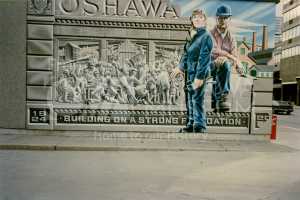
Speaking of murals, let’s look at some! I love this one, not only is shading done to make it seem like it’s engraved insanely good, but I like how it highlights the important work of our workers, specifically blue-collar, of the past and present. We should never take labourers for granted, they must be appreciated more!
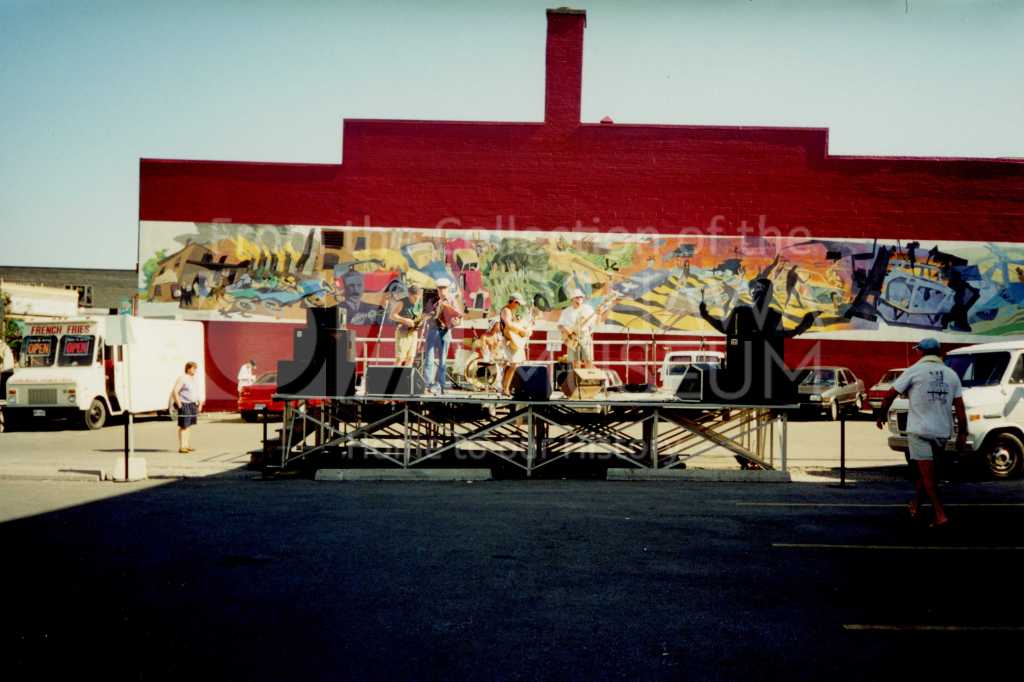
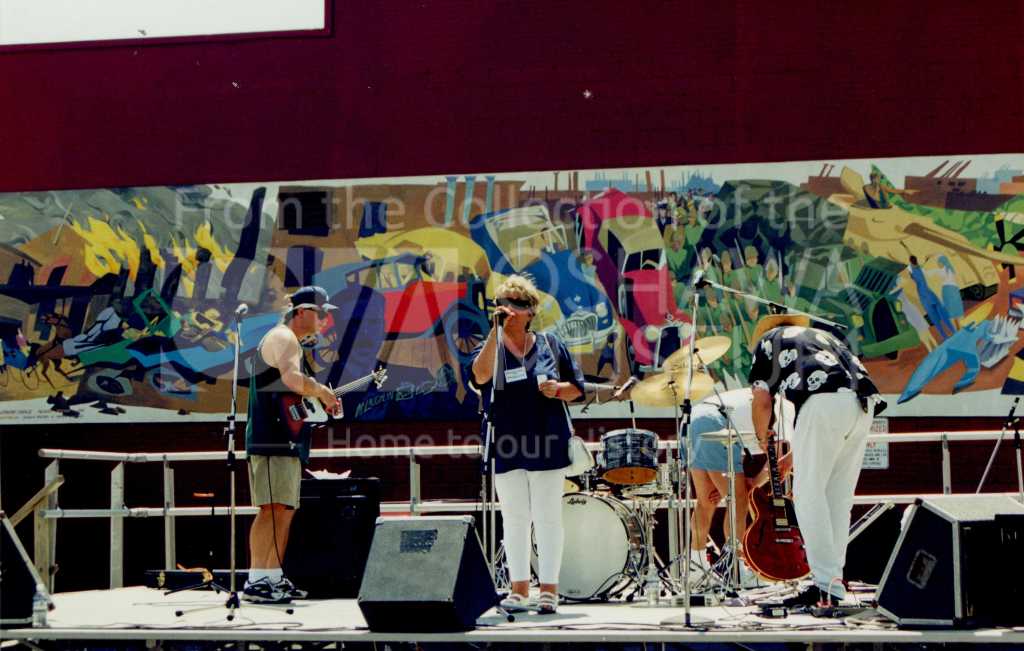
This mural is HUGE! Even after staring at this photo for quite some time, I still don’t think I understand just how large this mural really is. It’s beautiful. There is so much to look at. I love its unique art style, the funky shapes, dark shadows, and the use of a bright colour palette. I love the role it plays in these specific photos: as a colourful background for the musicians performing in front of it.
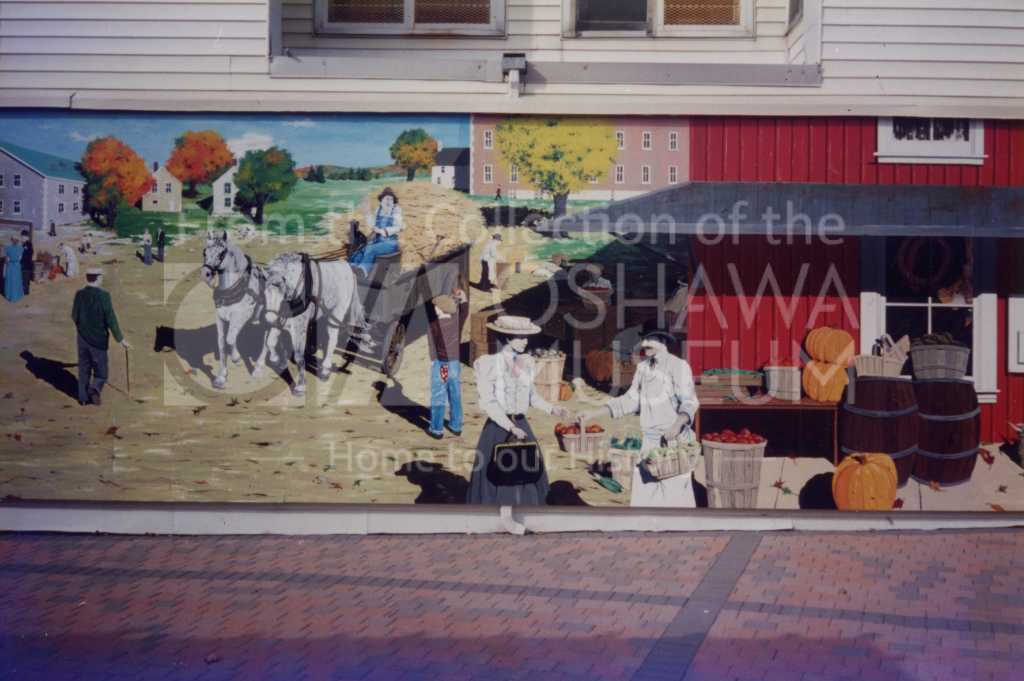
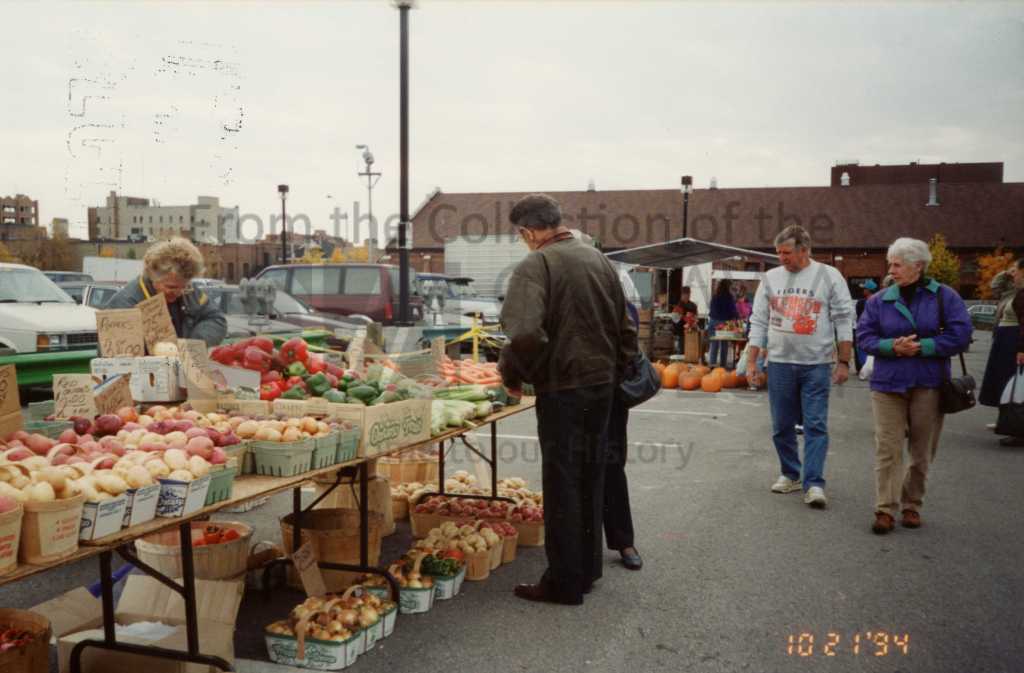
Here’s a cool “life imitates art” moment! Both photographs showcase Oshawa of different time periods; one showcasing of what I assume, the early 1900s, and the other showcasing the 1990s with people looking to buy from a farmer’s market, with some of the same vegetables for sale and pumpkins in the background. It’s funny how these little things from far in the past are still relevant today, even with its slight changes.
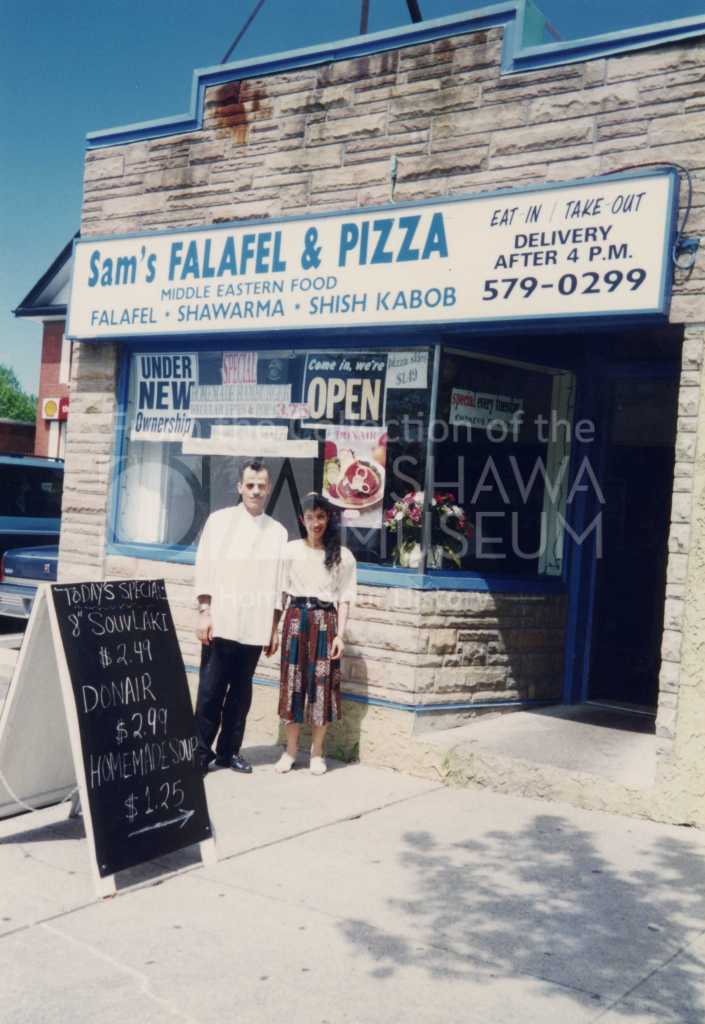
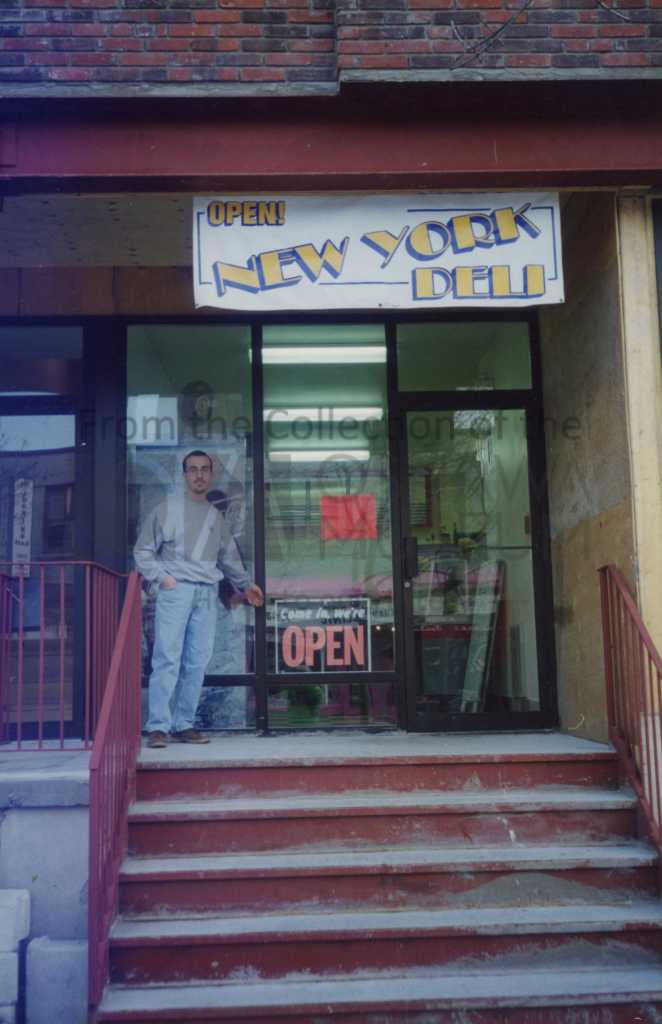
With all the talk about food, let us look at our next set of photos: restaurant storefronts! I’m always down for a good sandwich. Bread, protein, and vegetables all layered on top of each other; it’s perfect! I guess the insides spilling out is a disadvantage but it’s all part of the sandwich experience. I have yet to try a proper New York style deli sandwich. I can, however, talk about my appreciation for the great shawarma and döner. They’re amazing, and as filling as they are, I always have room for two. Interesting fact: the donair is a Nova Scotian variant of the Turkish döner. The difference is that donairs are made out of seasoned ground meat instead of sliced meat from a skewer. They have different toppings as well. The food scene has changed so much in 30 years. There are many restaurants to choose from, from Indian, to Mediterranean, Italian, Chinese, Thai, and more!
My final blog comes to an end. There is so much more I can showcase and talk about from this collection, but if I do, this post will go on forever. Thank you to the Oshawa Museum for giving me such an amazing opportunity! And thank you to the readers for reading until the end! I hope I have given you a reminder of Oshawa’s love for art, music, and food. May we continue to celebrate it!


















